Intercultural Communication: Personal Experiences Compared
VerifiedAdded on 2022/11/19
|11
|834
|258
Presentation
AI Summary
This presentation delves into the realm of intercultural communication, drawing insights from an interview with an individual from a different cultural background. The presentation begins by outlining the personal background of the interviewee, detailing their experiences in China and their recent visit to the USA. It highlights interesting cultural facts, such as long-standing marriage traditions and gender roles. Furthermore, the presentation examines the interviewee's experiences adapting to a new culture, particularly in terms of communication styles and social norms. A significant portion of the presentation is dedicated to a comparative analysis of the presenter's cultural experiences with those of the interviewee, focusing on differences in communication styles and approaches to help and assistance. The key learning emphasizes the importance of the platinum rule – treating others as they wish to be treated – and the role of empathy in intercultural interactions. Finally, the presentation provides concluding thoughts on developing cultural awareness, establishing shared ground, fostering motivation, acknowledging cultural differences, and developing essential skills for effective intercultural communication. The presentation is based on the concepts of worldview and cultural dimensions. The presentation is supported by references to academic resources.
1 out of 11

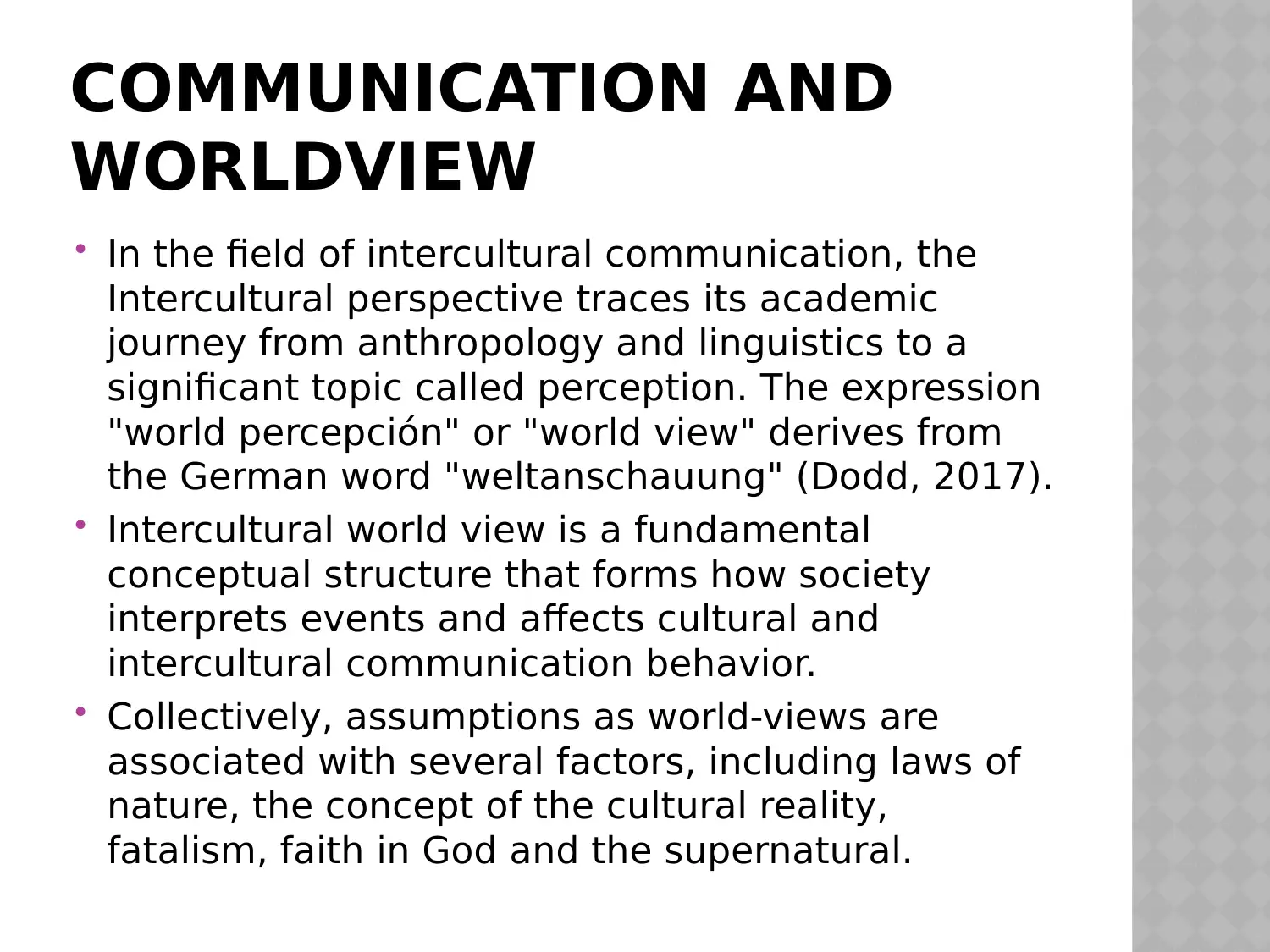
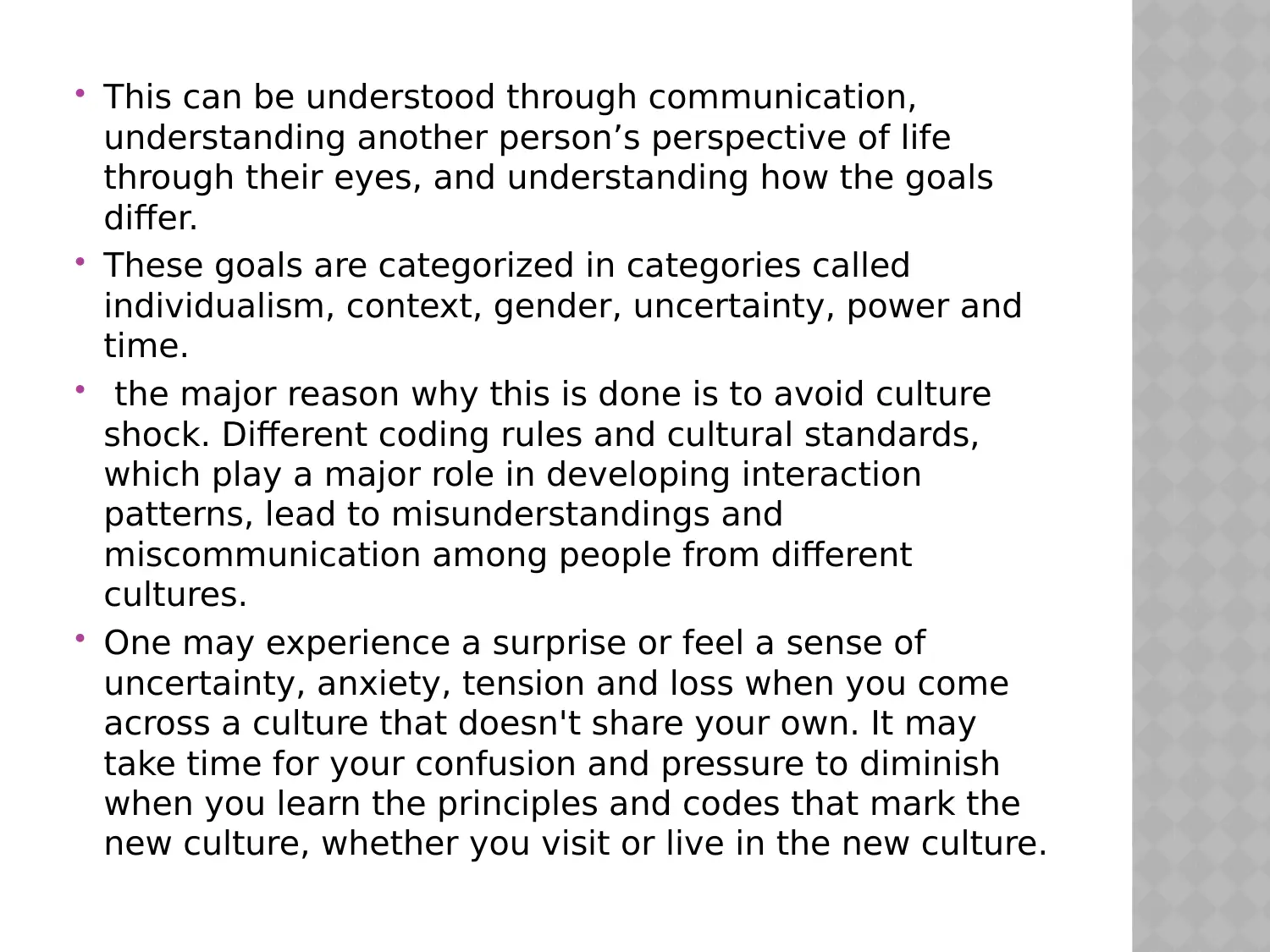

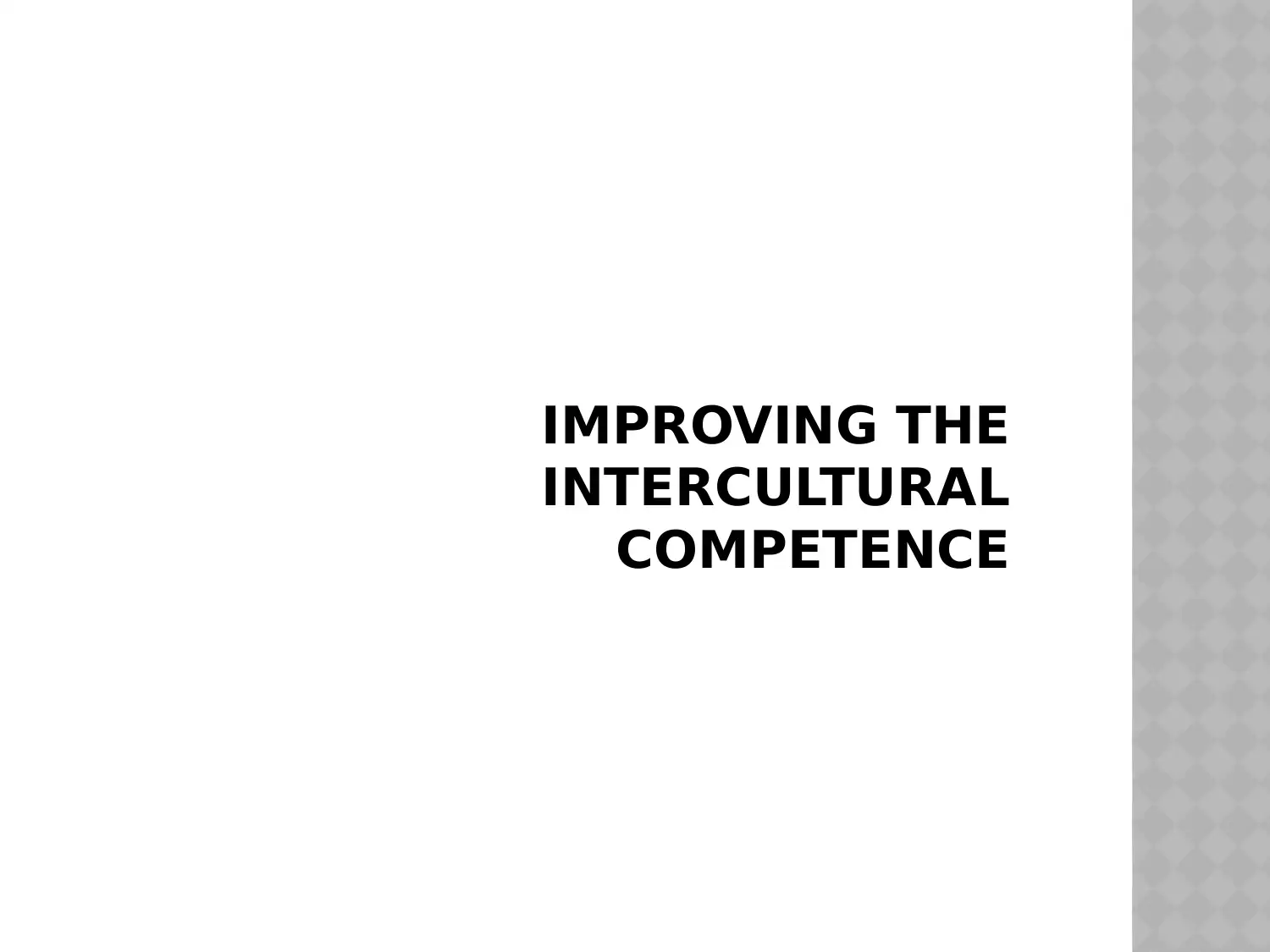
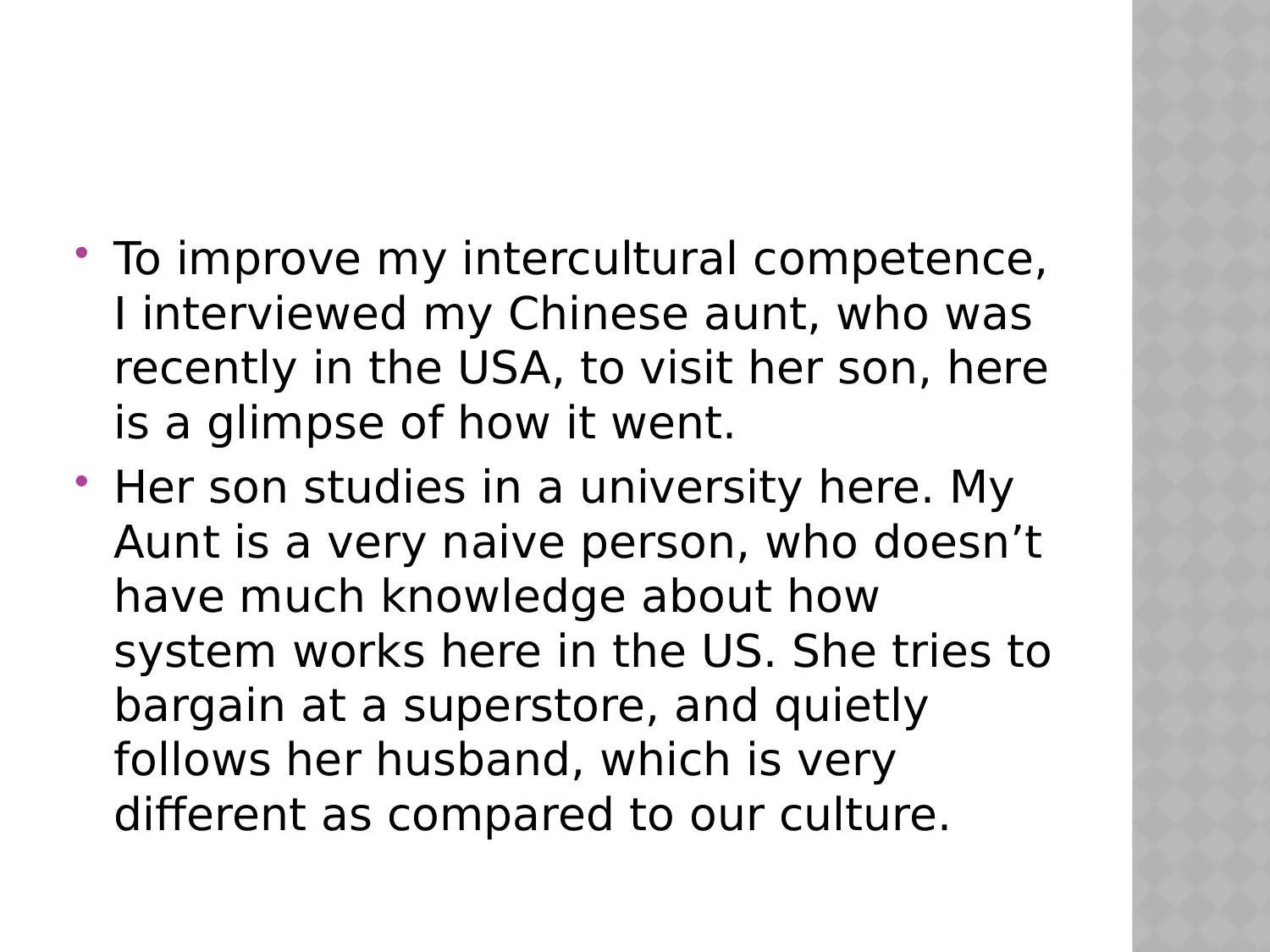
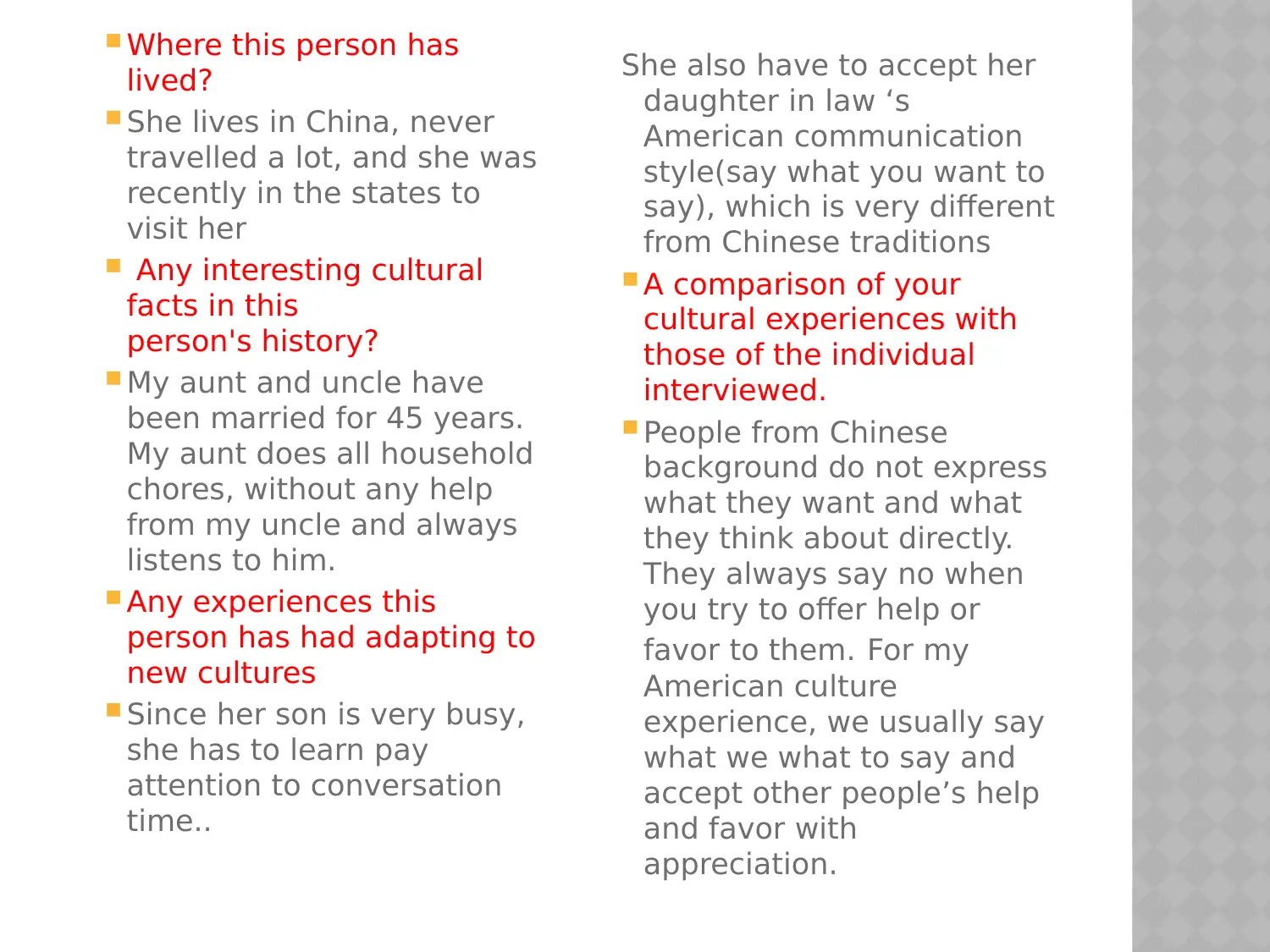
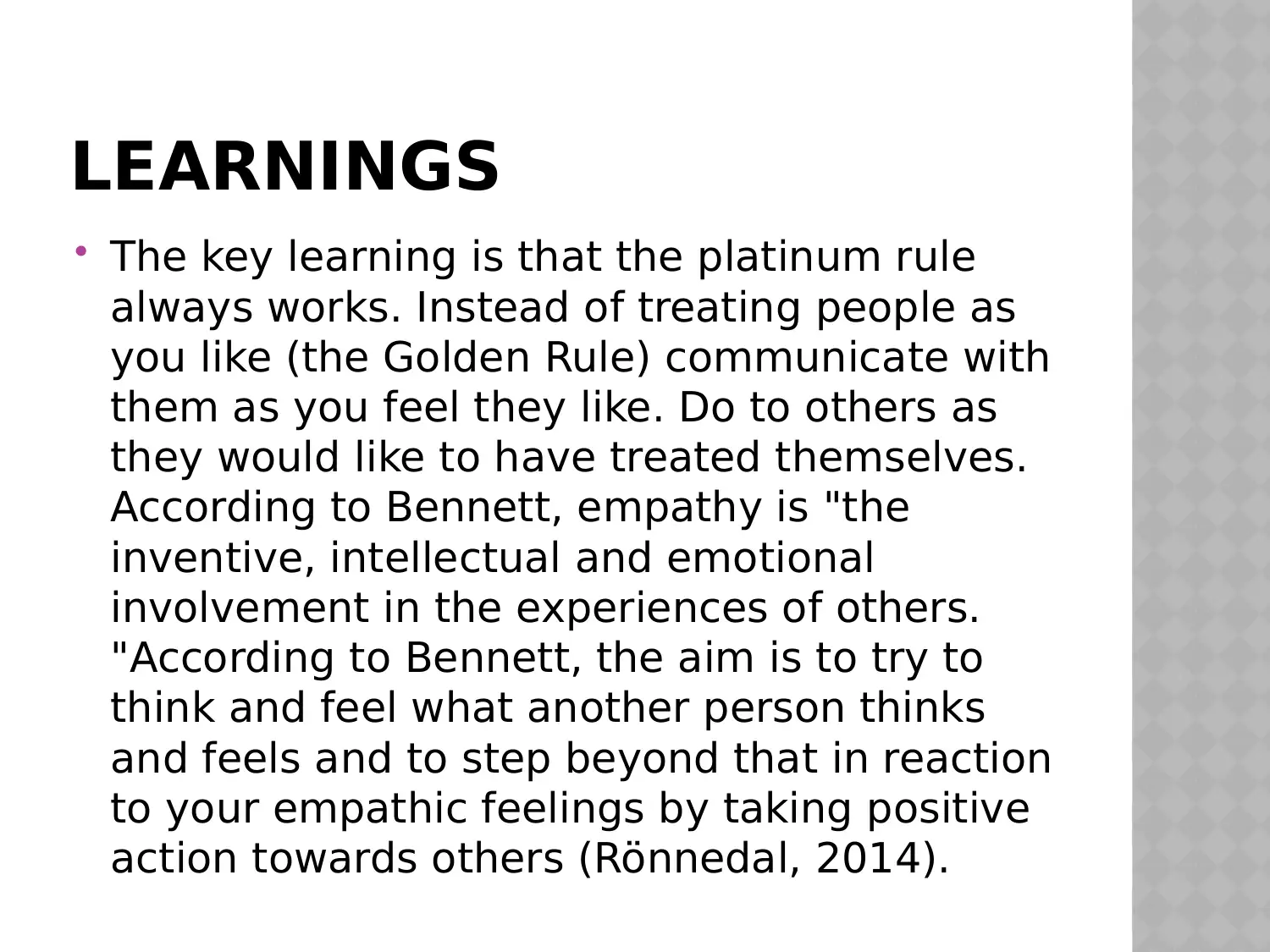
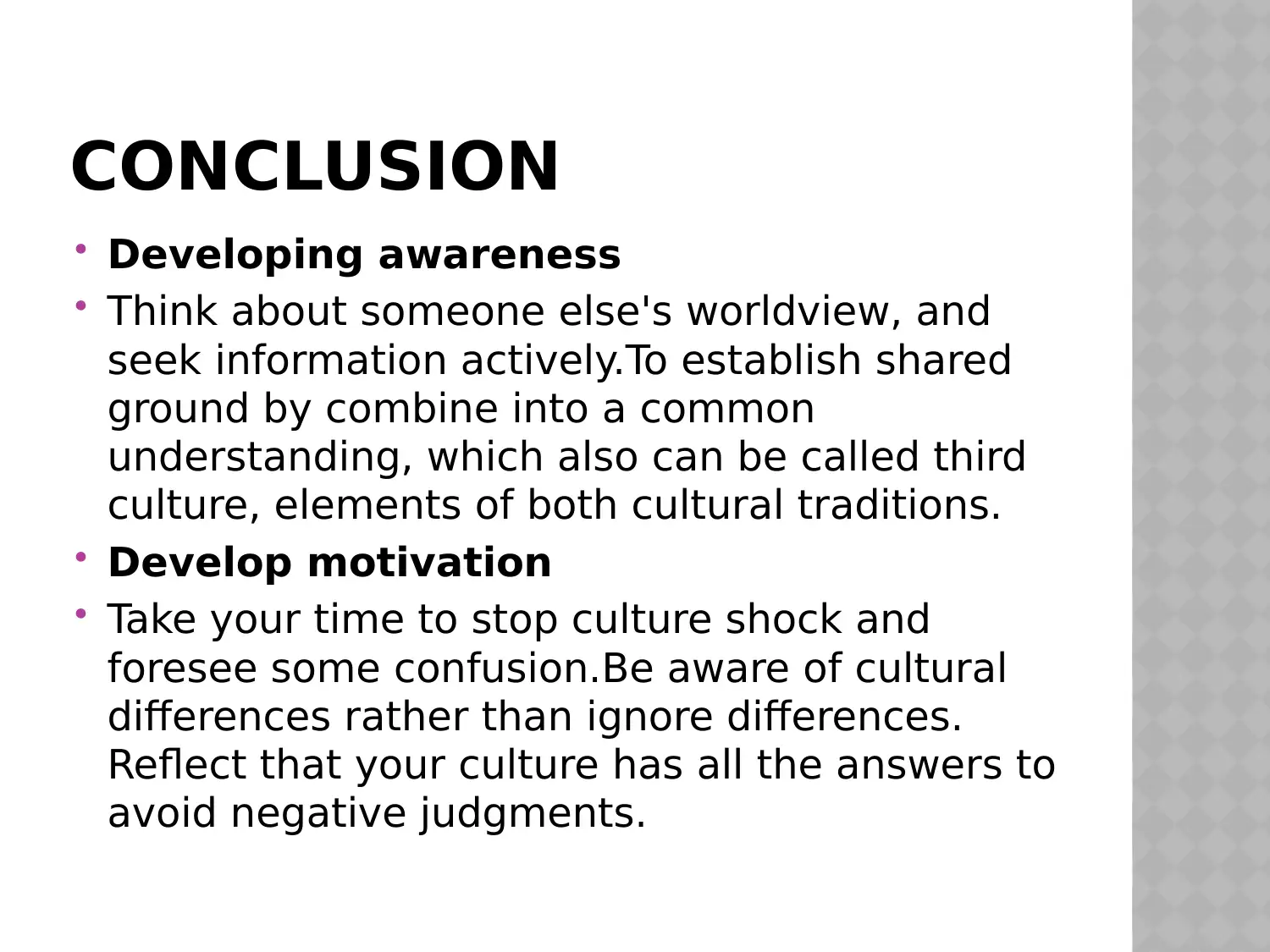
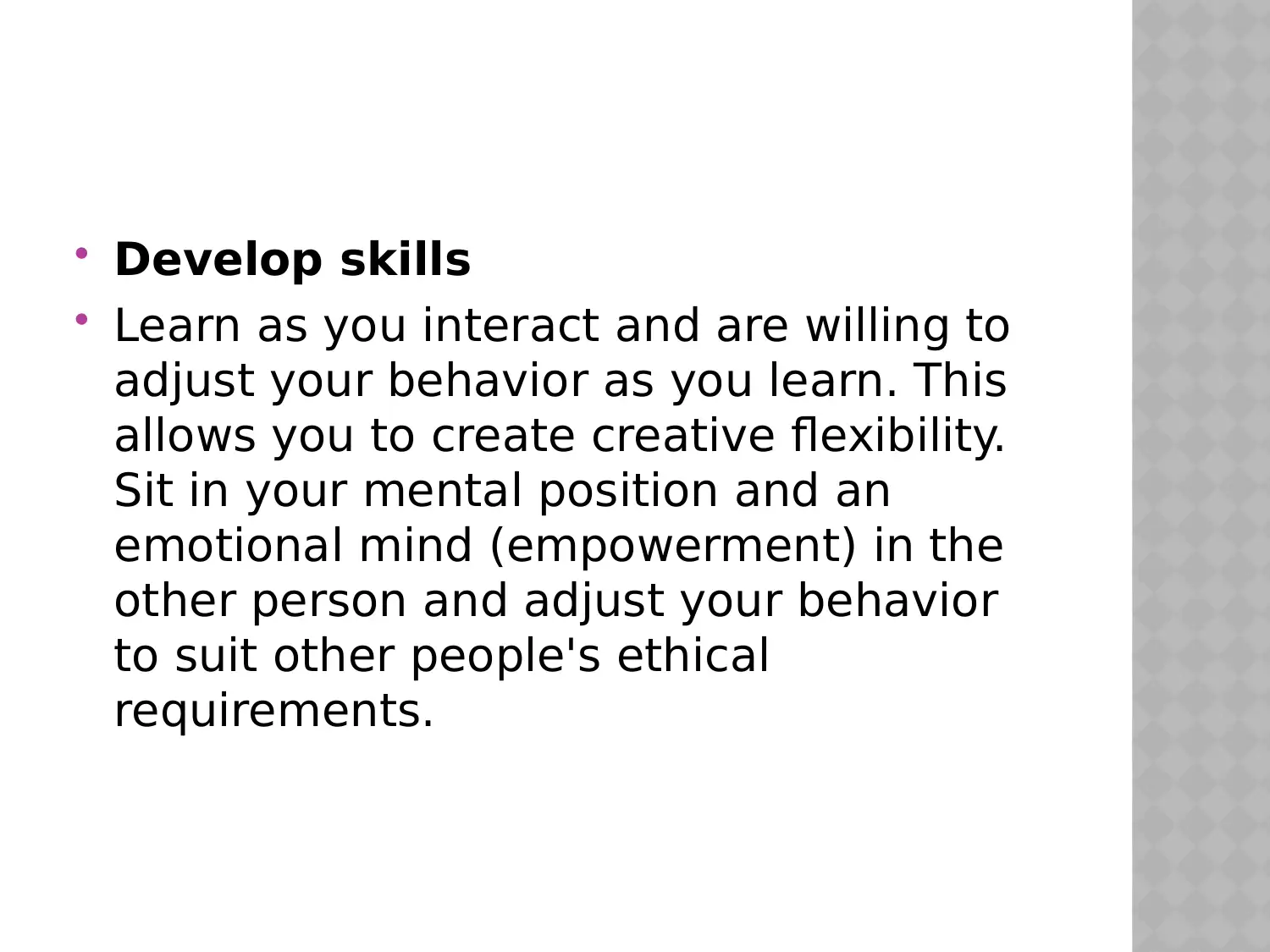
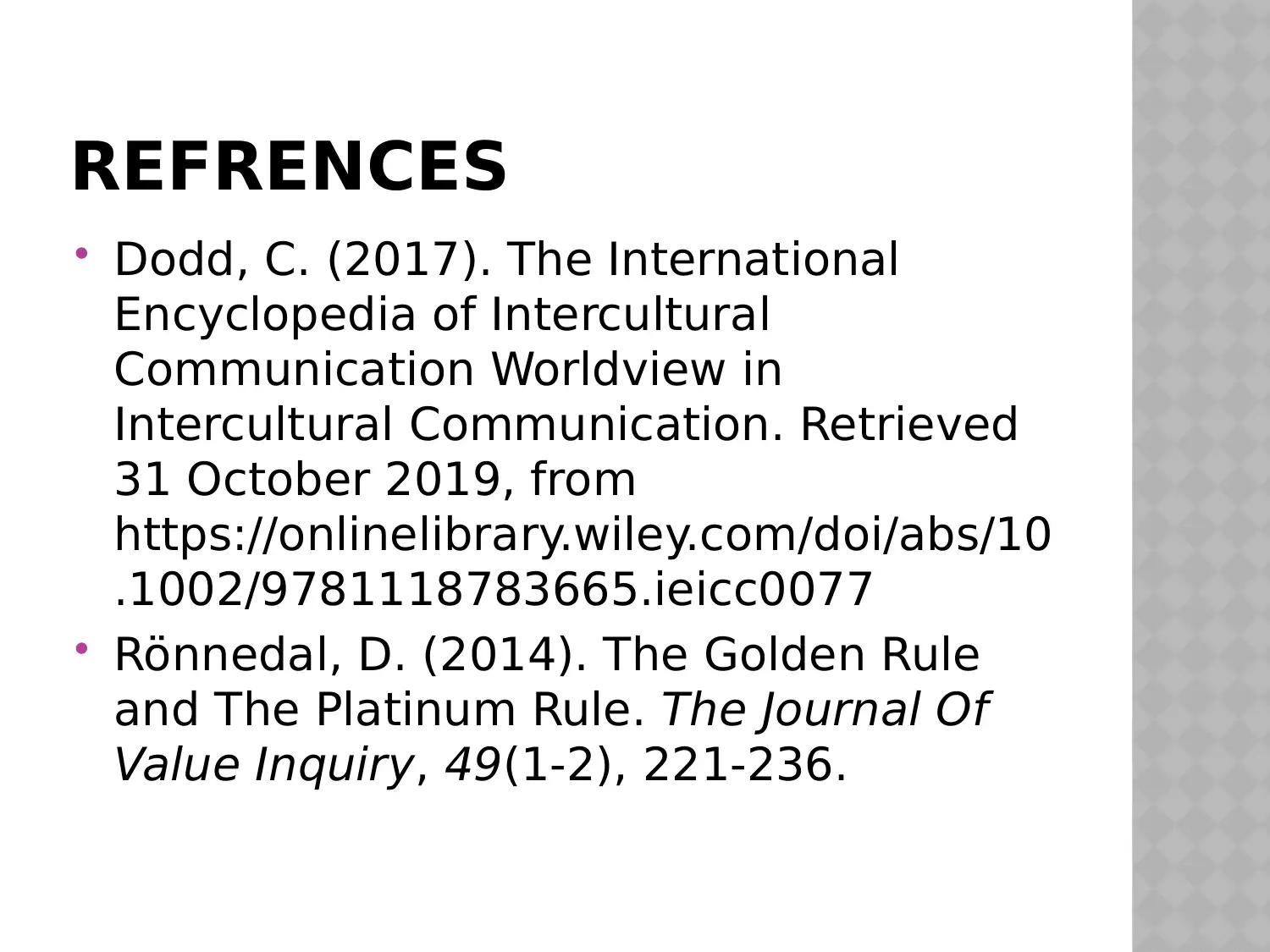







![[object Object]](/_next/static/media/star-bottom.7253800d.svg)